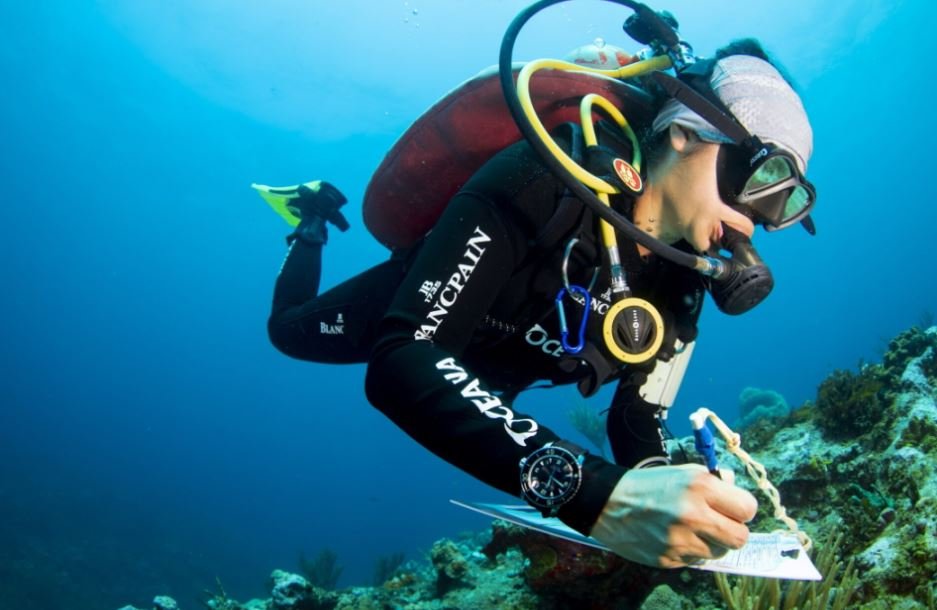Sustainability in the Watch Market
Economies of Sustainability
“Going green” has been earning green for years now, especially in sectors where the leading demographic is Millennial or younger. Every plastic product in your department store now sells an eco-friendly alternative for 15% more than its traditional counterpart. Businesses offering recycling and composting services are now household staples in major cities across the country. Large companies are clamoring for carbon-neutral tax credits at the steps of their state legislature. Most recently, sales of electric vehicles worldwide more than doubled in 2021, slashing individual dependence on oil while gas prices skyrocket in 2022.
Clearly, modern products and services are exploding in tandem with sustainability…but what about more “old school” industries, like luxury watches and jewelry? Given the examples ahead, hobbyists and professionals agree that the embrace of sustainable practices in these traditional fields as well as the more modern ones is proof that the eco-craze is here to stay.
Regenerative Watchmaking
High-end timepieces have historically been more progressive than diamonds and jewelry have. Many jewelry designers exist, each with different styles of products and romantic slogans designed to set them apart, but it’s foolish to expect much innovation from an entire sector touting the phrase “diamonds are forever”. In contrast, a wealthy and diverse fraternity of legacy watch manufacturers can find many different ways in which to attract buyers to various niches and brands. New eco-friendly watch materials, partnerships with conservation-based nonprofits, and cause marketing collaborations have all found footholds in the luxury watch industry thanks to purchasing support from sustainably minded consumers. Let’s take a look at a few of my favorite cases of environmental friendliness in the watch world
Blancpain + PADI
Blancpain launched the world’s first modern diving watch in 1953, the Fifty Fathoms. With a 300 year history in horology, they have demonstrated plenty of focus on the ocean and its conservation. PADI, similarly, is historically the most well-known international organization when it comes to certifying SCUBA divers. Together, these two organizations have funded ocean expeditions for years. Some of their most famous collaborations are the Gombessa Project, a series of ocean floor adventures designed to study a prehistoric deep-sea fish called the Coelacanth, and the Pristine Seas Expeditions, the research from which has contributed to the establishment of millions of square kilometers of marine protected areas.
Oris + The Coral Restoration Foundation
Oris and Coral Restoration Foundation (CRF) have been partnering since 2014 in an effort to bring awareness, education, and action to combat the loss of the world’s coral reefs. Over the last decade, CRF has planted more than 170,000 corals on the delicate coral reefs in the Florida Keys. In 2017, Oris dedicated a limited-edition Aquis to the nonprofit called “The Staghorn Restoration” and years later followed this with another limited edition, “The Carysfort Reef.”
These fan-favorite divers are not only made to raise awareness of these causes, but also critical funds. This past March, an 18kt yellow gold version of the Carysfort Reef sold at CRF’s annual Raise the Reef gala with a final hammer price of $50,000, notably, $31,000 above MSRP. With all proceeds benefiting CRF.
Finally, Oris has confirmed they are fully climate-neutral as of 2021, and recently during Watches & Wonders, the brand released their full sustainability report which you can find on their website.
Seiko Save the Ocean
No conversation about dive watches is complete without mentioning Seiko. The Japanese manufacturer built the first 150M dive watch in 1965, and each of their dive watches since then has been specifically constructed to meet the ISO 6425 standards for underwater timepieces. As well, the price points of these watches are oftentimes a fraction of those advertised by their “desk diving” Swiss competitors. Seiko has partnered with PADI Aware, The National Institute of Polar Research, and the Fournoi Underwater Survey and Excavation Project. As a member of Seiko’s dive-watch cult following and an authorized dealer of their brand, I’ll be sure to wear my limited edition Prospex next month as I dive with PADI Aware to become a certified debris-clearing scientist.
Breitling + The Ocean Conservancy
The Superocean Heritage has been one of Breitling’s most successful collections, despite their brand being known first and foremost as a family of aeronautical timepieces. The company itself served as a corporate sponsor for The Ocean Conservancy for years before launching a limited-edition Superocean in support of their mission to rid the seas of marine pollution. After contributing a portion of sales from this watch towards The Ocean Conservancy, Breitling famously paid to invite 100 guests to the island nation of Bali for a comprehensive cleanup effort that made headlines. In a synergistic relationship, Breitling had also previously partnered with an eco-friendly apparel manufacturer in order to create the “Outerknown” NATO strap for its watches. Outerknown creates usable nylon fabrics from discarded fishing line.
Ulysse Nardin + Sharks
This French company creates Swiss watches with a stylish affinity for shark conservation globally. Partnering with scientific organizations such as Ocearch, Ulysse Nardin has created several limited edition timepieces, each in honor of a particular species of endangered or threatened population of sharks. The Hammerhead, Great White, and Lemon Shark watches are all incredibly rare (300 pieces in the world, in some cases) in order to highlight the scarcity of some of these misunderstood animals. Make sure to admire the casebacks of these watches as you search online for their incredible artwork, and keep your eye on my Instagram channel for the chance to purchase one for yourself.
Future of Horological Conservation
As you can see, luxury watch manufacturers collaborating with “green” or “blue” nonprofits leads to very profitable and impactful relationships on both sides…as well as some really cool timepieces. However, this is far from the end of eco-innovative watches. For example, along with their assistance with shark conservation, Ulysse Nardin has begun issuing certificates to their customers in NFT form. Instead of the traditionally physical certification card, the French brand believes that non-fungible certs delivered digitally will improve the security of second hand watch sales. These blockchain-backed “papers'' will also eliminate the waste products associated with the cost of printing paper and plastic.
The famously-extravagant brand Jacob & Co. has launched a digital collection of watches within their Astronomia line called “Metaverso”. With each model based on a planet, some were released with a one-of-a-kind physical edition while others were limited to only 30 digital NFT copies. Proponents are claiming that avoiding the costs of actual watch manufacture will be beneficial to the planet, given that no materials need to be mined from the earth nor will energy be wasted by shipping or production. Detractors argue that the point of a watch is to physically wear it on their physical wrist…undoubtedly fair when considering prices well above $100,000.
Whether or not these leaps are too much of a stretch for today’s still-acclimating consumers, there is no doubt that further innovations are coming.
Individual Impact
From my perspective, as long as major watch manufacturers continue to harness the power and influence that customers and their dollars provide, we’ll continue to see environmentally beneficial changes entering the space. However, those consumers do ultimately cast the deciding vote. If the luxury watch audience suddenly began purchasing fewer sustainably oriented timepieces, then watchmakers would respond in kind by reverting back to their less eco-conscious methods. In other words, support watch brands who are furthering this type of work by purchasing their eco-experimental watches.
If you’re an advocate of sustainability and regenerative environmentalism, then teach your peers about why an Outerknown strap from Breitling is worth buying. Explain to a Swatch hater that their bio-ceramic materials are well worth investing in (at retail). Convince the people in your WhatsApp watch group to learn more about timepiece brands that are using electronic certificates. Maybe they’ll even buy some watches that raise awareness about endangered species, and you can shout each other out on social media for the benefit of White Rhinos. Appreciating the benefits of watch sustainability in the same way that we talk to each other about loving a certain style of bezel or bracelet will perpetuate the culture we’re looking for.
If you don’t personally care about “green” or “blue” watches beyond the color of the dial, that’s okay. Possibly the most impactful characteristic of luxury watch consumer’s is that they have capacity. If you can afford a Vacheron Constantin or an Audemars Piguet, and you find interesting the research that a nonprofit is doing in conjunction with your preferred watch brand, then maybe consider donating straight to that charity itself. Most people in this tax bracket know that philanthropy can be just as rewarding as unboxing a brand new watch.
My name is Anthony Soussou and you can find me online as @DrDiveWatch. My family’s business has been running in the same shopping plaza in South Florida for 33 years, happily satisfying all of the community’s watch, jewelry, and diamond needs. Today as the CEO of Precious Moments Jewelers, I encourage all of you Watch Enthusiasts to remain sustainably-minded when it comes to your purchases and to always explore the new and exciting changes in our industry.
Wrist Enthusiast would like to thank Anthony Soussou on his research and contribution to the publication. You can find him at the Instagram above.









